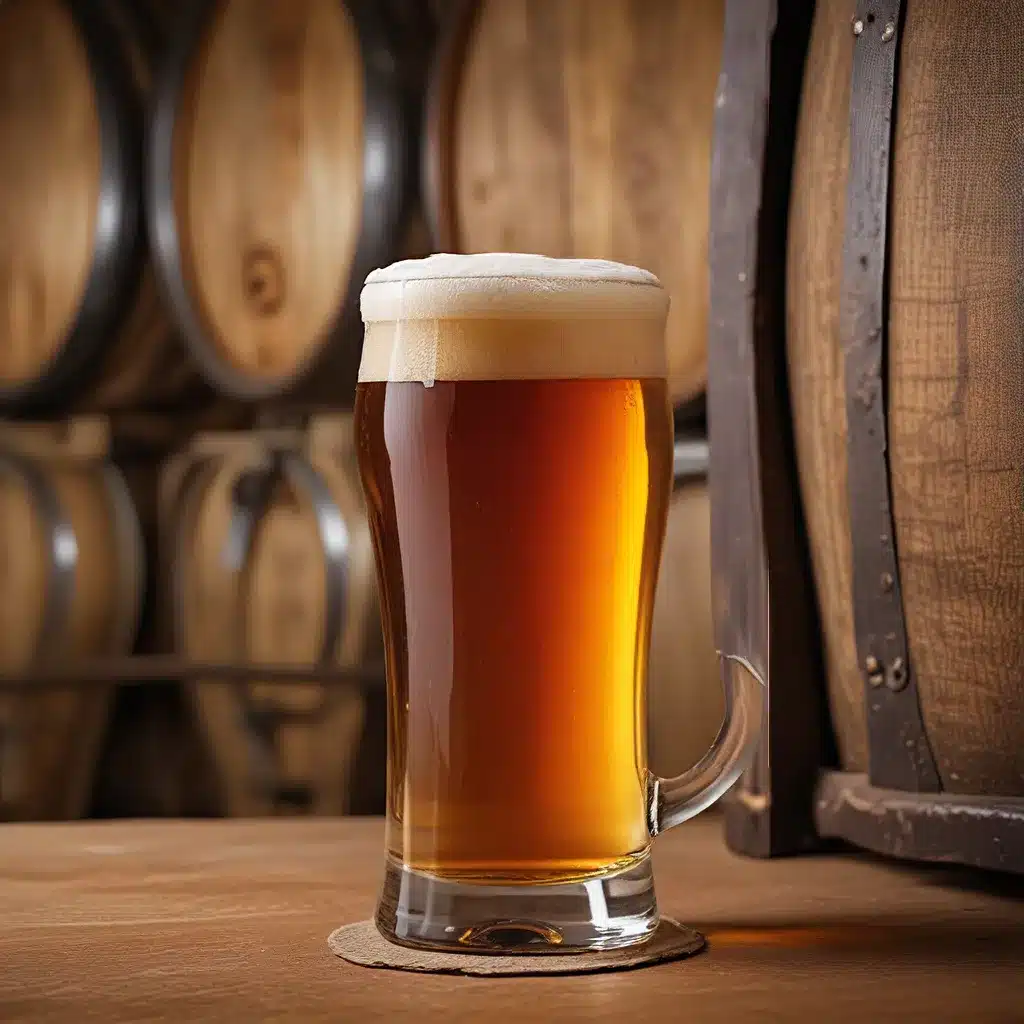
The Bubbly Brew that Fueled Innovation
I’ll never forget the day I discovered the unexpected connection between beer and scientific progress. It all started when I attended a local craft beer conference and stumbled upon a captivating keynote address by Professor Tom Shellhammer, the renowned Fermentation Science expert from Oregon State University.
As I sipped on a delightfully hoppy IPA, Shellhammer took the stage and launched into a series of revelations that left me equal parts amazed and thirsty for more. Who would have thought that our beloved beverage could be the catalyst for some of the most groundbreaking discoveries in modern science?
The Chemistry of Dry Hopping
Shellhammer began by delving into the intricate science behind dry hopping – the process of adding hops to the beer during conditioning or fermentation. As a passionate homebrewer myself, I was eager to learn the insights hidden within this ubiquitous brewing technique.
Shellhammer and his team conducted an experiment, starting with a base pale ale and dry hopping it with varying amounts of Cascade hops. The results were nothing short of fascinating. They found that beyond a certain threshold of 8 grams of hops per liter (g/L), the extraction of hop oils and their aromatic contributions start to plateau. In other words, loading up your brew with an excessive amount of dry hops is simply an inefficient use of resources.
But the real surprise came when Shellhammer revealed that the different hop oil compounds have distinct saturation points. The oils responsible for citrusy aromas reach their peak around 4 g/L, while the herbal and tea-like notes continue to build up to the 8 g/L mark. This means that brewers can carefully balance the aroma profile of their beer by precisely controlling their dry hopping rates.
As I listened, I couldn’t help but draw a parallel to my own homebrewing experiments. That time I used an entire pound of hops in a 5-gallon batch? Yeah, let’s just say the results were a bit… overwhelming. Shellhammer’s research has certainly saved me from any future “hop grenade” incidents.
Bitterness Redefined
The next segment of Shellhammer’s talk delved into the long-held assumptions about hop bitterness. For the longest time, brewers and scientists believed that the only source of bitterness in beer came from the isomerization of alpha acids during the boiling process.
However, Shellhammer’s latest findings have turned this notion on its head. He discovered that compounds called humulinones and polyphenols, which are formed when non-isomerized alpha acids are oxidized, can actually contribute significant bitterness even at fermentation temperatures. This revolutionary insight has profound implications for modern brewing techniques, particularly the rise of hazy, juicy New England-style IPAs (NEIPAs).
These heavily dry-hopped beers often have surprisingly low bitterness levels, leading some to assume they’re lacking in hop character. But Shellhammer’s research suggests that the bitterness in these beers isn’t coming from the traditional sources. Instead, it’s being driven by those newly identified compounds that don’t require a boil to become bitter.
As I reflected on this, I couldn’t help but wonder: What other brewing “truths” might be ripe for reexamination? Shellhammer’s work has certainly challenged the status quo, and I couldn’t wait to see what other discoveries might be lurking just beneath the surface of our beloved brew.
The Mysterious Phenomenon of Hop Creep
The final and perhaps most mind-bending segment of Shellhammer’s presentation tackled the puzzling phenomenon of “hop creep.” Now, I’ll admit, even the name sounds a bit ominous, but the science behind it is truly fascinating.
Shellhammer described an experiment where he took samples of Coors Banquet beer and subjected them to various treatments. When he added both hops and yeast to the beer, the sugar levels dropped dramatically over time, far more than in the samples with just hops or just yeast. The explanation? It turns out that hops contain enzymes that can break down unfermentable sugars into simpler, readily-fermentable compounds.
In other words, the hops themselves are actively contributing to further fermentation, even after the yeast has seemingly finished its job. This “hop creep” effect can be a real headache for brewers, especially when working with hazy NEIPAs that often contain suspended yeast. The more unfermented sugars in the beer, the more potential for an explosive situation, as the hops continue to chew through those complex carbohydrates.
As I processed this information, I couldn’t help but think back to a few of my own homebrew mishaps. That one time I had to delay packaging my latest NEIPA because the gravity just kept dropping? Yep, hop creep strikes again. And those rumors I’ve heard about exploding cans of heavily dry-hopped beers? Well, now it all makes sense.
Pushing the Boundaries of Beer Science
Shellhammer’s revelations that day were a true eye-opener, shattering long-held assumptions and pushing the boundaries of what we thought we knew about beer. From the delicate balance of hop aromas to the unexpected sources of bitterness, and the dynamic interplay between hops and yeast, his research has fundamentally reshaped our understanding of this ancient beverage.
As I made my way back home, my mind was buzzing with questions. What other brewing secrets might science uncover? How else could the pursuit of better beer lead to groundbreaking discoveries? And most importantly, where can I get my hands on some more of those amazing barrel-aged beers I sampled at the conference?
One thing’s for certain: the relationship between beer and science is far more complex and fascinating than I ever imagined. And I can’t wait to see what other surprises this bubbly brew has in store.
The Up & Under Pub is the perfect place to explore this captivating intersection of beer and science. With our extensive selection of craft brews and knowledgeable staff, you’re sure to embark on a journey of discovery with every sip. So come on in, pull up a stool, and let’s toast to the amazing world of beer and all the surprises it has to offer.

